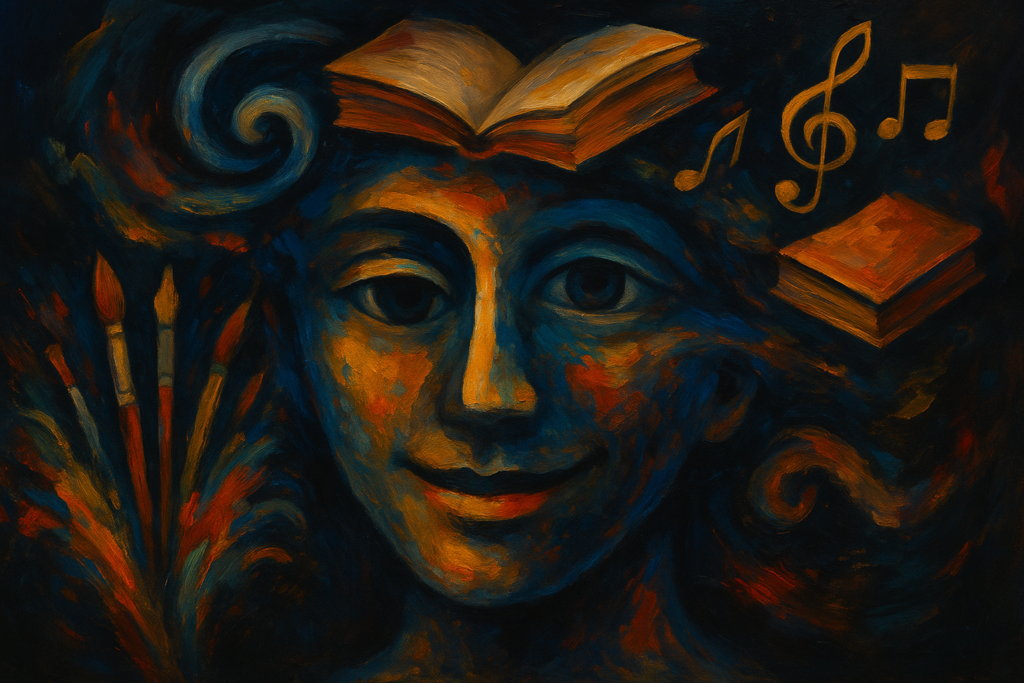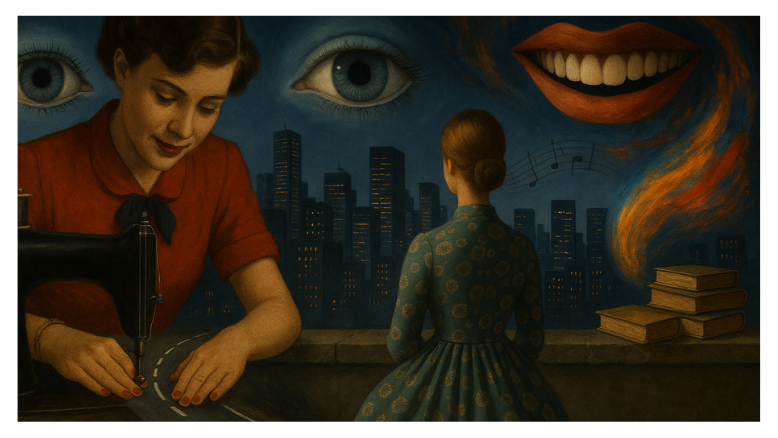Discover how the emotion-creativity loop fuels expression, healing, and deeper emotional awareness in a fast-paced world.
In a world that often rewards logic over feeling, the connection between our emotional lives and creative expression is rarely given the space it deserves. Yet for centuries, across cultures and disciplines, the human impulse to create has been intimately tied to how we feel. The emotion-creativity loop is not just a theory—it’s a lived experience, a psychological reality, and for many, a lifeline. Emotions fuel creative acts, while creative expression helps us process, release, and understand those emotions. Recognising this loop offers not just personal insight but cultural relevance in an increasingly burnout-driven world.
What Is the Emotion-Creativity Loop?
The emotion-creativity loop describes the cyclical relationship between our emotional states and our creative impulses. Strong emotions, such as joy, grief, anger, love, fear, often lead us to create: to write, paint, build, perform, design. And once we create, the process itself helps us better understand or ease those emotions.
For example, a grieving person might begin to journal and find unexpected clarity. A musician channels heartbreak into a song that resonates globally. Frida Kahlo, the renowned painter, painted her chronic pain and emotional struggles, transforming suffering into visual poetry. In each case, emotion triggered creativity, and the creative act became a form of self-understanding or healing.
Emotions Spark Creativity
Creative impulses are rarely born from a vacuum; they’re often reactions to emotional stimuli. Whether it’s beauty, injustice, anxiety, or heartbreak, emotional triggers activate creative expression. This is especially visible in cases where creativity and mental illness correlate.
Artists like Vincent van Gogh, Sylvia Plath, and Kurt Cobain illustrate the intense interplay between emotional turbulence and creative output. Their emotional worlds, while painful, gave rise to some of the most powerful art of our time. Their work is a testament to how emotions, particularly darker ones, can ignite originality, urgency, and authenticity.
Importantly, this connection isn’t limited to professional artists. Even ordinary people turn to crafts, music, poetry, or even memes during emotionally heightened moments. Emotions demand an outlet, and creativity provides one.
Creativity for Emotional Processing
Once the emotion is released into a creative act, something crucial happens: the brain begins to process. This is where the emotion-creativity loop becomes healing.
Psychologically, creating helps integrate emotional experiences. According to expressive arts therapy research, engaging in creative tasks activates multiple brain regions, including the amygdala (emotions), prefrontal cortex (decision-making), and the hippocampus (memory). This whole-brain activity allows for better emotional regulation and deeper self-awareness.
Studies show that painting, journaling, or making music can reduce cortisol (the stress hormone) and elevate dopamine, bringing a sense of reward and calm. This study from the American Journal of Public Health offers a review of over 100 research papers, affirming that creative engagement improves mental health outcomes, lowers stress, and supports emotional recovery.
On a personal note, I’ve experienced this loop firsthand—how writing or making art brings clarity when thoughts are tangled and chaotic. Creativity becomes a grounding force, helping me translate confusion into coherence and anxiety into awareness.
This explains why after a creative burst, such as writing a poem, sketching, or dancing, we often feel lighter or more grounded. It is like the loop has completed a cycle—from emotion, through creation, into clarity.

How Society Disrupts the Emotion-Creativity Loop
Despite the benefits, the emotion-creativity loop is often suppressed by societal norms. From a young age, many of us are taught to downplay our emotions, especially in professional, academic, or public settings. Emotional expression is deemed immature or inefficient. And Creativity, unless monetised or branded, is seen as frivolous.
There are also deep global taboos around mental health and emotional vulnerability. Artistic expression born from emotional pain is romanticised in media but stigmatised in real life. Men are told to be “stoic.” Women are told not to be “too sensitive.” Creative careers are discouraged unless they guarantee stability.
This cultural discomfort with emotion and expression blocks the natural flow of the loop. Suppression of feelings leads to stress, apathy, or numbness, and over time, diminishes not only personal creativity but also our collective Emotional Intelligence.
Reclaiming Emotional Intelligence in Creativity
To restore the emotion-creativity loop, we must start by reclaiming Emotional Intelligence (EQ) as a vital tool in the creative process. EQ involves recognising, understanding, and managing our own emotions and those of others.
When creativity is guided by EQ, it becomes more than talent—it becomes truth. Authentic expression isn’t just powerful; it’s necessary. Whether you’re designing a campaign, writing a screenplay, or curating a personal brand, audiences respond most to vulnerability and emotional depth.
Encouraging emotional fluency in creative spaces means:
- Valuing honesty over perfection.
- Allowing room for emotional risk-taking.
- Recognising the role of inner life in creative problem-solving.
By integrating EQ into creative education and workplaces, we can make space for genuine, innovative work that resonates across cultures and industries.
Feeling as Freedom: The Foundation of Creating
At its core, the emotion-creativity loop is about freedom—the freedom to feel, to express, to process, and to transform. In a world that often numbs and commodifies, feeling deeply and creating from that place is a radical act.
The loop reminds us that feeling is not a flaw; it’s the source of happiness. Every brushstroke, paragraph, melody, or invention born from emotion is a form of liberation. It says: “I exist. I feel. And that matters.”
When we allow ourselves to enter this loop, we don’t just create better art or better ideas, we create space for healing, for connection, and for being fully alive. In this sense, the emotion-creativity loop isn’t just a mechanism. It’s a movement. One that returns us to our humanity and reminds us that creation begins with the courage to feel.

